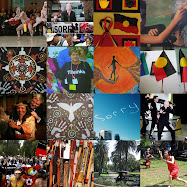
 One Word …WE!
One Word …WE! :
The songs and story of Pete Seeger and friends…a musical biography by Maurie Mulheron.
In 1993, teacher – activist – musician, Maurie Mulheron, wrote a theatrical work about the life and times of iconic folk musician – activist, Pete Seeger.
The play had a sellout season at the New Theatre in Newtown, Sydney, in 2000. It has been taken on the road to folk festivals at Maleny and Woodford in Queensland, and Port Fairy in Victoria.
Most recently it was revived for three performances (June 12, 13 and 14) at the Tom Mann Theatre in Surry Hills, Sydney. The performances were a celebration of Seeger’s 90th birthday, on May 3 this year. It contained much new material. As Bruce Springsteen said at Pete's 90th birthday concert/celebration in New York (a who's who of American folk - protest - activist musicians) : "You outlasted the bastards, Pete!"
Seeger was once America’s most boycotted, banned, blacklisted and picketed singer. But Pete not only survived and at 90, still records and performs including at the recent Obama Inauguration Lincoln Memorial Concert with Bruce Springsteen, and his grandson Tao Rodriguez-Seeger.
(Springsteen and Seeger sing This Land Was Made For You and Me at Barack Obama's inaguration concert)
The title? Well, many of the old union songs of the 1930s - like
We Shall Overcome and
We Shall Not Be Moved – started off as gospel songs ‘Jesus Is My Captain, I Shall Not Be Moved’; ‘I Will Overcome’. Instead of singing the first person singular “I”, the unionists changed just one word … “we”.
And 'The Friends'? Maurie says: "The show is not really about one singer. It's about a tradition. A tradition dating back centuries in which singers and songwriters, 'the friends', have used their skills to galvanise others to action and to provide spiritual nourishment when things looked bleak. "
For this production I was privileged to be able to provide some technical support, and enjoyed working with the talented cast and crew. The house was packed for each performance, including on the final day, a standing ovation.
Perhaps you know some of the songs Seeger, and his bands and friends have written or sung over the years?
Where Have All the Flowers Gone? (Pete Seeger and Joe Hickerson) : sung by Pete Seeger
Pastures of Plenty (words and music by Woody Guthrie) : sung by Pete Seeger
This Land Is Your Land (words and music Woody Guthrie) : sung by Bruce Springsteen, Pete, and Pete's grandson, Tao Rodriguez-Seeger
Union Maid (words Woody Guthrie, music traditional) : sung by Arlo Guthrie & Sarah-Lee Guthrie
If I Had A Hammer (words and music Lee Hays and Pete Seeger) : Peter Paul and Mary's version, and here,
Arlo and Pete.
Turn! Turn! Turn! (words and music Pete Seeger) : sung by Judy Collins & Pete. And
here Pete tells how he came to write it.
Waist Deep In The Big Muddy (words and music Pete Seeger) : sung by Tao Rodriquez-Seeger
Goodnight Irene ( words and music Huddie Ledbetter – Leadbelly) : The Weavers (Pete and friends Lee Hays, Fred Hellerman, Ronnie Gilbert)
If you follow any one of those links, you risk being lost forever in great folk music, as one thing leads to another....





















































